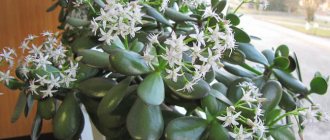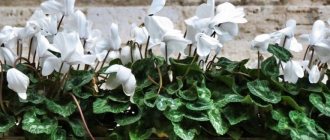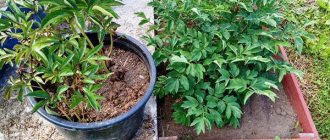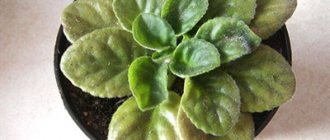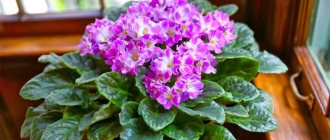Indoor plants can stop blooming for various reasons, but, as a rule, the set of these reasons is common to all. Accordingly, the algorithm for further actions to eliminate the problem is in most cases identical.
Have you noticed that all flowering plants are usually in a blooming state when they are put up for sale? And what about the fact that each of these plants, in most cases, appears in the store exclusively during its flowering season (hyacinth, orchid, aphelandra), and after its end is usually marked down? This is exactly the nuance that you should first know when looking for an answer to the question of why the plant has not bloomed since you brought it home. But first things first. There may be several reasons why your flower was last in buds exclusively in a flower shop.
Content
- 1. Bouquets in pots - chic, but short-lived
- 2. Daylight hours are too short/long
- 3. The soil is not suitable
- 4. Transplant deadlines were violated
- 5. Lack of humidity
- 6. Excess/lack of fertilizers
- 7. Not observing the rest period
- 8. Other factors
- 9. A few final tips
In nature, plants regularly bloom at exactly the right time, regardless of the vagaries of the weather.
So why do they refuse to bloom indoors, where they are protected and cared for? The life of each plant is subject to the program laid down by nature. From the moment the sprout appears, the vegetative period begins, characterized by the formation of shoots and leaves. Depending on the genus and species of the flower, this stage can last from several weeks to ten years. And only after its completion, the plant, which has grown and gained strength, is ready to flower. For example, Violet needs no more than 2 months to do this, while for Ekhmeya the process takes about 3 years.
Buying a flowering plant is a great way to acquire a fully grown and mature specimen. It seems that if this flower managed to survive in a store, then at home, with love and care, it will definitely not be in danger. However, time passes and, contrary to expectations, new buds do not appear, despite the efforts made by the owner. What's the matter? The reasons may vary.
Planning is the Key to Blooming Success
Most often, when planting perennials and sowing seeds of annual flowers, we find a place for them after the fact of purchase. For this reason, plants are not always placed in the most favorable place for them. But every culture has its own needs. And if light-loving marigolds, sage or lavender are placed in shade, you will not get decent flowering from them. But hydrangea, brunnera, hellebore and hosta will only be happy to have a place in the shade. Thus, the first rule of a beautiful flower garden is planning, in order to at least have a general idea of what the future flower garden will look like.
Walk around the area and decide where you would like to see flowering plants. Determine how much light these places have, how far they are located from the water source (whether it will be convenient for you to water them). Select priority crops for each zone - decide where to place perennials, how much space can be allocated for annual plantings. Look through magazines, websites to understand which combinations you like best: roses plus lavender, a monoplant of snapdragons, marigolds or gazania, a mixture of various annuals... And in what color combinations.
Think about what time your flowerbed should be the brightest. In early spring - then look at the bulbs - tulips, daffodils, hyacinths, primroses, hazel grouse. During the summer - choose alyssum, petunia, ageratum, verbena, lobelia. Or perhaps it should be a mixed flower garden, blooming from early spring to late autumn. In this case, it can be diversified with asters, chrysanthemums, and frost. Determine a rough list of what you want to plant.
Bouquets in pots - chic, but short-lived
Often indoor plants are not designed to bloom again. First of all, this applies to “potted bouquets”. On the eve of the holidays, luxurious flower arrangements in attractive containers appear in stores. Such Chrysanthemums, Cyclamens, Roses bloom for a short time or for a long time, but always once. They then face the fate of traditional cut flower bouquets.
IN THE PHOTO: Blooming cyclamen is a good gift for any holiday
Pest infestation
Oddly enough, this is not the most common reason for plants not to “bloom,” but still, with very severe damage, for example, by thrips or whitefly, the plant not only grows and develops poorly, but also does not set buds. If the pest has not had time to spread greatly on the plant, then it may bloom, but then it will begin to lose both buds and flowers.
There are other, less common reasons why a plant does not bloom. This may be due to incorrect pruning - in some plants flower buds are formed only on young shoots of the current growth, in others - on last year's old shoots. Or a violation of watering, for example, severe drying out or watering with chlorinated or hard water, can cause concrete to fall off. Many plants have their own characteristics, for example, orchids bloom during the dry period, when the rains stop in nature (the air humidity remains quite high), if you start watering or spraying them abundantly at the beginning of the formation of buds, then you may not wait for the flowers, but the plants new growth of vegetative mass will begin.
Daylight hours are too short/long
Flowering is directly dependent on lighting. It is very important to provide the plant with enough light. At the same time, you should not overdo it with intensity; most indoor flowers react extremely negatively to direct sunlight. The lack of natural light can be compensated for by artificial lighting - fluorescent lamps. The length of daylight hours is of fundamental importance. So Azalea, Begonia, Kalanchoe can bloom only when the day gradually shortens. However, you should not wait for Calceolaria or Hibiscus flowers to appear if the light reaches the plant less than 12 hours a day. Insufficient lighting can be judged by the appearance of the flower: the stem becomes thinner and elongated, the distance between the leaves increases.
IN THE PHOTO: Calceolaria needs a 12-hour day of light
Scheduled watering
The frequency of watering depends on the amount of light the flowers receive, temperature, air humidity and many other factors. The author of the blog about house plants, Lisa Eldred-Steinkopf, advises not to water on a schedule, but to check the condition of the soil. For example, if it was cloudy all week, the process of photosynthesis was not very active, which means that the plant may not need water on the next scheduled day.
You can assess the condition of the soil with your finger if the plant “lives” in a shallow pot, or with a wooden stick if it is in a large and deep one. You need to immerse the stick in the ground so that it reaches the bottom of the pot, leave it for a minute, and then pull it out and check. If it is wet at the end, it means it is too early to water the plant.
In this case, for example, cacti and succulents should be “watered” when the soil is completely dry. Tropical foliage plants - in partially moist soil. Ferns and flowers with thin leaves - in slightly dry soil.
It is important not to forget about the correct breaks between waterings. The same cacti or succulents may not be watered for several weeks, but ferns will need moisture within a week.
Take note
